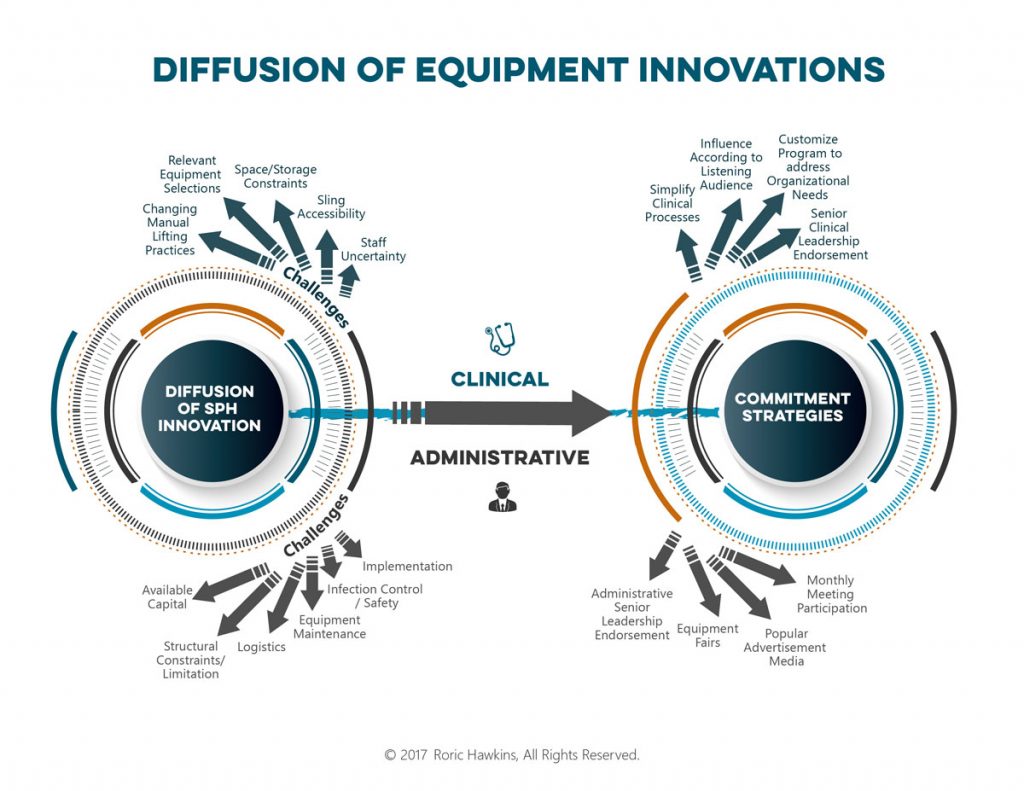Safe Patient Handling programs present a unique, dual-layered mechanism demanding the engagement and collaboration of diverse hospital departments for optimal effectiveness.
This extensive interdepartmental involvement positions these injury prevention programs as comprehensive solutions.
It’s a common misconception that merely procuring patient-lift equipment and stationing it in clinical areas suffices to reduce or eliminate caregiver injuries. Regrettably, the expectation often falls short of reality, leading organizations to puzzle over persisting patient-handling injuries despite considerable investments in patient-lift devices. The solution lies in our “Two-Dimensional Process,” a concept unique to The RP Hawkins Group. It’s a holistic approach uniting two crucial elements in pursuit of a common objective: musculoskeletal injury prevention.
It’s commendable to equip your staff with patient-lift equipment, but the real game changer is integrating a systematic process into everyday nursing practice routines. This process is designed explicitly to reinforce end-users’ commitment to using mechanical-lift devices, with ceiling-lifts playing an ideal role due to their convenient placement within the patient care workspace. A well-designed Safe Patient Handling program marks the difference between unused equipment and devices that become the organization’s standard for lifting and moving patients. However, these components must harmonize to truly enable an effective injury prevention system.
Our “Two-Dimensional Process”, comprising Patient-Lift Equipment and the Safe Patient Handling Program, encapsulates several aspects that maximize your return on patient-lift equipment investments:
1 Alignment: Placing the right equipment in the right clinical settings.
2 Consistency: Promoting equipment utilization through repetitive processes.
3 Learning: Exchanging of knowledge from near-misses and lessons learned.
4 Adaptation: Leveraging experiences to refine patient-lift equipment processes.
A triumphant Safe Patient Handling program goes beyond randomly dispersed patient-lift devices across a healthcare organization. Instead, it should exemplify a seamlessly organized clinical operation focused on patient-lift equipment and its strategic implementation processes. The keys to successful outcomes lie in comprehending and executing this injury prevention mechanism, paired with the capacity to foster necessary internal collaborations. The RP Hawkins Group excels in offering the guidance required to assemble all the pieces of this organizational puzzle.
Connect with Roric to discuss how implementing our two-dimensional process can help prevent musculoskeletal injuries related to manual patient handling and movement.


